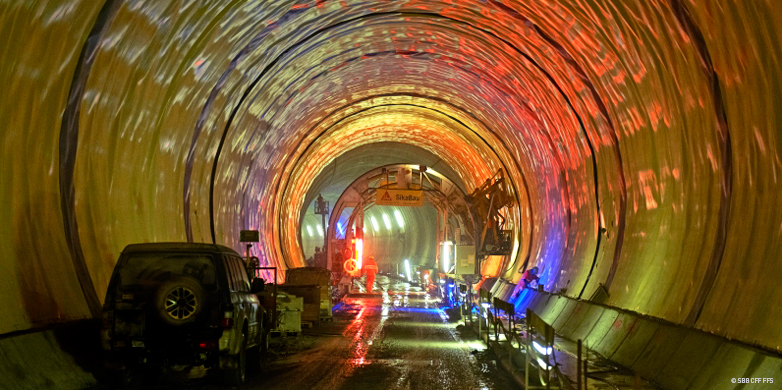High capacity at the heart of the city
After a construction phase of some six years, the 9.6 kilometre cross-city link (Durchmesserlinie) and Löwenstrasse station will open tomorrow in Zurich. ETH News spoke to rail transport expert Ulrich Alois Weidmann, professor of transport systems at the Institute for Transport Planning and Systems, about the changes the new route will bring.

Mr Weidmann, tomorrow the first section of the cross-city link will open for business. What do consider the importance of this major project?
The interesting thing is that both the commuter lines and the long-distance lines profit from this project. The connection of the north-south agglomeration will be significantly improved. On these commuter lines, trip times will be significantly reduced and services will be improved. In long-distance traffic, passengers on the east-west routes between Geneva and St. Gallen in particular will see improvements with less congestion on the line and shorter travel times.
What else will change for passengers?
I think the situation at Zurich main station will ease somewhat. Passenger flows will be distributed more evenly and transfer times will be shorter on the whole. The new sections are also very spacious, allowing pedestrians to pass each other in a less stressful manner.
As an expert, what excites you about the project?
The way Löwenstrasse station has been built under the existing central station is extraordinary. The builders not only had to secure the old sandstone building in every phase of construction, but also keep an eye on the threat of flooding from the Sihl – and all that during ongoing rail operations! Specifically, 300,000 people were on the move in the vicinity of the construction site every day, rushing to get their trains. The construction process was highly precise, combined with state-of-the-art technology – for example, for structural monitoring. This was the only way to complete the project in such a short time with minimal disruption.
But are the four new tracks at Löwenstrasse sufficient?
In terms of capacity, these tracks replaces roughly eight to 10 tracks at a terminus. In a through station, the trains no longer have to be turned around and can enter the station one after another, which saves a lot of time. The principle is similar to that at Museumsstrasse station, in which a train passes through every two to three minutes.
Do you expect any surprises with the opening?
No. Although it is a large project, it didn't require any fundamental intervention in the system. In the long run, there will be new questions, however, because Zurich main station now has exceptional capacity. I like to compare it to an onion: the cross-city link is the indispensable core with a high capacity, but now the outer layers become critical too. Stations such as Hardbrücke and Stadelhofen have a limiting effect, as do the single-track sections in the Furttal, on the right shore of Lake Zurich, at am Albis and Knonauer Amt. Not to mention the national bottlenecks Zurich-Olten and Effretikon-Winterthur.
The second part of the cross-city link will open in about a year. What’s happening now?
In terms of construction, the second part is not quite as challenging and a lot of it is already finished. But from a functional standpoint, it is very important because it allows integration with the long-distance network. The central elements are the two new bridges – the Kohlendreieck and the Letzigraben – which are clearly visible parts of the cityscape. And just to clear up a common misconception here: only passengers leaving Zurich will be able to enjoy the beautiful view from the bridges. Travellers to Zurich reach the main station at ground level.
About
Ulrich Weidmann has been a full professor of transport systems at the Institute for Transport Planning and Systems (ITV) in the Department of Civil, Environmental and Geomatic Engineering since 2004. From 1994 to 2004, he was employed by the Swiss Federal Railways (SBB), initially to work on the network-wide expansion of commuter transport and later on railway technology.

